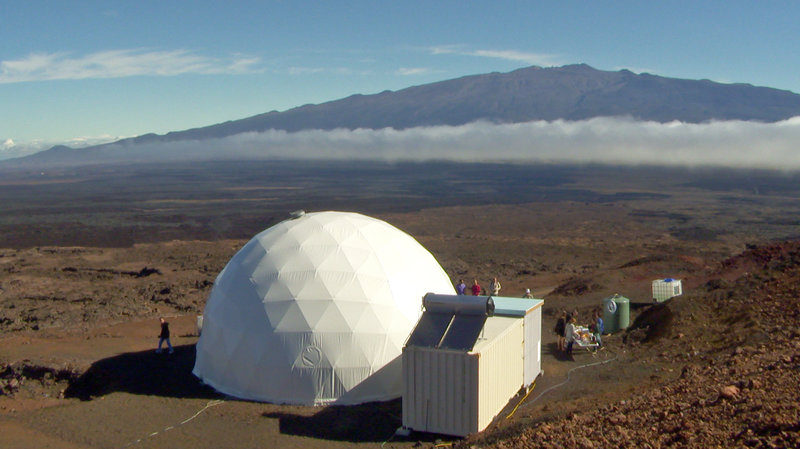Scientists to Live on Volcano for 8 Months To Simulate Martian Mission
Ron Perillo / 8 years ago
Six scientists will be spending the next eight months on a remote Hawaiian volcano as a part of a human-behaviour study for future missions to Mars. The group consisting of four men and two women will live in a dome designed to simulate life on the red planet. Unlike the typical island paradise with sandy beaches and comfortable temperatures Hawaii is known for, the scientists will be on Mauna Loa, one of the five major volcanoes in Hawaii. The volcano is active and its most recent eruption was in March 1984. The dome shelter measures 1,200 square feet equivalent to a small two-bedroom home covered with vinyl for protection against the elements. It is actually cold in mars with recorded temperatures going only as high as 20C during the summer but the location was selected more for its remote nature.
Since it is primarily a behavioural study, the team will have no physical contact with the rest of the outside world and would have to use a simulated 20-minute delay in communications with a remote support crew like it would really be like in Mars. This communication between the ground team and the home base will consist of e-mails. The behavioural study is meant to find out the ideal candidate for such long-term remote missions since being so remote can be psychologically taxing to most individuals. The current group consists of engineers, a computer scientist, a doctoral candidate and a biomedical expert selected from a group of 700 applicants weeded out through a series of personality and background checks as well as extensive one-on-one interviews.
NASA is extremely careful about selecting the right candidates for the Mars mission and careful not to make a repeat of what happened to Biosphere 2 in Arizona back in the 1990 which ended in disaster. The new dome will have small sleeping quarters for each member as well as a shared kitchen, laboratory and bathroom. The crew will subsist on mostly freeze-dried foods but parcels will be dropped off periodically by a robot at a nearby drop-site for the members to retrieve. They are expected to wear spacesuits whenever stepping out of the shelter which also includes wearing instruments for proximity and mood sensors. They will be provided with virtual reality devices during the mission as a means to pass time and simulate familiar comfortable surroundings.





















